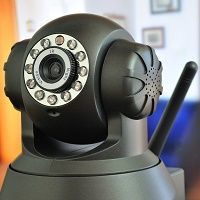Article
Recording Exams Has Clinical and Financial Benefits
Author(s):
Any professional knows it's best to act as if you were being recorded any time you are on the clock. But as new devices make it easier to record conversations, some providers are taking a proactive approach, recording patient visits and making the video available to both doctor and patient.

We’ve all heard that automated voice on the other end of the phone—“This call may be recorded for quality and training purposes”—and don’t think twice about it. But what if a patient entered your exam room and announced—or worse, secretly decided—that he or she was going to record the physician-patient interaction?
Would you be okay with that?
It turns out patients are doing just that. According to Randall Porter, MD, a Phoenix neurosurgeon at Barrow Neurosurgical Associates, 39 states allow the audio or video recording of a conversation between two people as long as one party consents to it.
If you’re a physician, watch out, as evidenced by the Virginia man who secretly recorded his colonoscopy, then discovered the doctor and surgical team had mocked and insulted him once he fell asleep. The patient sued for defamation and malpractice, and a jury ordered the anesthesiologist and her practice to pay the man $500,000.
But it doesn’t have to be that way. And Porter, who has been recording patient visits since 2008, says there are plenty of benefits to recording the physician-patient visit. He recently launched The Medical Memory so that patients and physicians can view those visits after they occur.
“Patients have really embraced it,” Porter says. “It’s HIPAA secure, high-tech compliant, and all-digital. It’s as secure as their bank account.”
Unobtrusive Device
The Medical Memory app comes pre-installed on custom tablets that are given to patients when they check in for their appointment. They type in their email, user ID, secret PIN, and the same tablet is then used to record the interaction so it’s automatically uploaded to their account. It’s mounted on a stand so it does not need to be hand-held, but it’s mobile enough to move to another location if the physician wants to share images with the patient.
The app can also be downloaded to any mobile device already in use by a medical practice.
Porter says that most patients want the video, especially since it’s available at no cost to them. But there are times when patients are hesitant.
“Usually what we’ll do is tell the patients, look, we know you don’t think you need it, and that you have a simple problem,” Porter explains. “How about if we record it and then you can decide after if you want it. Because we saw a lot of people who would say after the visit, boy I wish I had taken the video.”
Two-Way Benefits
Porter says that patients often forget 80% of what their doctors tell them, and as such, many are now using their smartphones to record visits—sometimes with, sometimes without the physician’s knowledge. That can impede or damage the physician-patient relationship.
“The Medical Memory is a better way for both patients and doctors to record medical visits,” he says.
The only negative, Porter says, has come from the physician side in the form of concern over the legal risk. But after seven years and having recorded more than 4,000 physician-patient interactions, he has not encountered a single legal incident.
“One of the corollaries would be the body camera on the police,” Porter explains. “Complaints went down by 88%. As long as you retain your professional composure, it’s going to be more protective than harmful.”
Still, David M. Walsh, partner in the Dallas office of Chamblee, Ryan, Kershaw & Anderson, PC, advises physicians to proceed with caution and think about what will be recorded. Also, consult with state and local laws.
“It would be unfortunate if a physician ran afoul of a law due to the lack of diligence in researching what is allowed in the physician’s jurisdiction,” he explains.
Time Is Money
Porter and his colleagues recently conducted a study of 400 patients—half had access to the video and half did not. The study found a 25% reduction in phone calls among the group that had video access. Results also indicated that patients who had access to the video had all or some of their questions answered 87% of the time.
“If you look at my office, we have 11,000 phone calls per year,” Porter says. “A 25% reduction is more than 2,500 phone calls. So if you reduce phone calls for the physician by 2% or the staff by 8% it pays for itself. And by recording an entire patient visit from start to finish, the Medical Memory can also reduce readmissions and malpractice risks, significant concerns for any practice in today’s regulatory and legal environments.”




